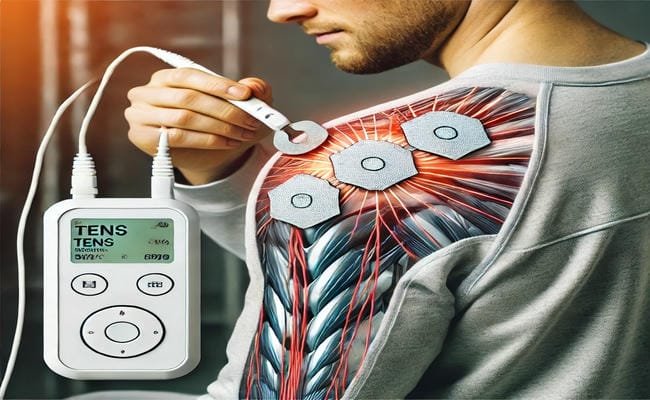
How To Trace The Chromebook Primitive Ward
January 23, 2025
How To Unlock The Sloop Starfield
January 23, 2025Subacromial-subdeltoid bursitis is a painful shoulder condition characterized by inflammation of the bursae located between the acromion, deltoid muscle, and the rotator cuff tendons. This condition often results in limited range of motion, tenderness, and discomfort during arm movements. One effective, non-invasive therapy for managing this type of pain is using a TENS (Transcutaneous Electrical Nerve Stimulation) stimulator. Here’s a step-by-step guide on how to treat prominent subacromial-subdeltoid bursitis using a TENS unit safely and effectively.
Why Use a TENS Stimulator for Subacromial-Subdeltoid Bursitis?
- Pain Relief: Reduces shoulder pain by blocking pain signals sent to the brain.
- Non-Invasive: No need for medications or injections.
- Muscle Relaxation: Helps relieve tension in surrounding muscles.
- Improved Mobility: Reduces discomfort, allowing for better range of motion during rehabilitation.
Tools You’ll Need
- TENS unit (portable device with adjustable settings)
- Adhesive electrode pads
- Conductive gel (optional for better conductivity)
- Clean, dry skin surface for electrode placement
Steps to Treat Subacromial-Subdeltoid Bursitis with a TENS Stimulator
1. Prepare the TENS Unit
- Ensure the device is turned off before connecting electrode pads.
- Attach the electrode pads to the lead wires securely.
- Adjust the settings to the lowest intensity level before starting.
2. Locate the Affected Area
- Identify the painful regions, typically near the top and outer part of the shoulder.
- You may feel tenderness over the subacromial or subdeltoid bursa.
- Note: Consult a healthcare professional to confirm the exact diagnosis before starting therapy.
3. Place the Electrodes Correctly
- Apply the electrode pads on clean, dry skin around the painful area:
- One pad placed slightly above the shoulder joint (near the acromion).
- The second pad placed just below the deltoid muscle.
- Ensure pads are at least 1 inch apart to allow effective current flow.
4. Adjust TENS Settings
- Turn on the device gradually, starting at a low intensity.
- Adjust the frequency:
- High-frequency (80-120 Hz): Ideal for acute pain relief.
- Low-frequency (2-10 Hz): Suitable for chronic pain or deeper muscle relaxation.
- Set the timer to 15-30 minutes per session.
5. Monitor the Session
- You should feel a gentle tingling sensation, but it should not be painful.
- If discomfort occurs, reduce the intensity or reposition the pads.
- Stay relaxed during the session to maximize the therapeutic effect.
6. Post-Treatment Care
- Turn off the TENS unit before removing the electrodes.
- Gently peel off the pads and clean the skin if needed.
- Store the electrode pads properly to maintain their adhesive quality.
Tips for Effective Treatment
- Consistency is Key: Use the TENS unit 1-2 times daily for consistent pain relief.
- Combine with Physical Therapy: TENS works well alongside stretching and strengthening exercises.
- Stay Hydrated: Proper hydration can improve muscle function and reduce inflammation.
- Consult Your Doctor: Especially if the condition doesn’t improve after a few weeks of treatment.
Precautions
- Do NOT Place Electrodes:
- Over the heart, neck, or directly on the spine.
- On broken skin, rashes, or infected areas.
- Avoid TENS If You Have:
- A pacemaker or other electronic implants.
- Pregnancy (without medical supervision).
- Severe heart conditions or uncontrolled epilepsy.
When to Seek Medical Attention
- Worsening Pain: If the pain intensifies despite TENS therapy.
- Signs of Infection: Redness, swelling, or warmth around the shoulder.
- Restricted Mobility: If you cannot move your shoulder without severe pain.
- Fever: Could indicate an underlying infection rather than simple bursitis.
Also Read: How To Trace The Chromebook Primitive Ward
Conclusion
Using a TENS stimulator for treating prominent subacromial-subdeltoid bursitis can significantly reduce pain, improve mobility, and enhance your quality of life. However, it’s essential to combine this therapy with other treatments, like physical therapy and medical supervision, for the best results.




